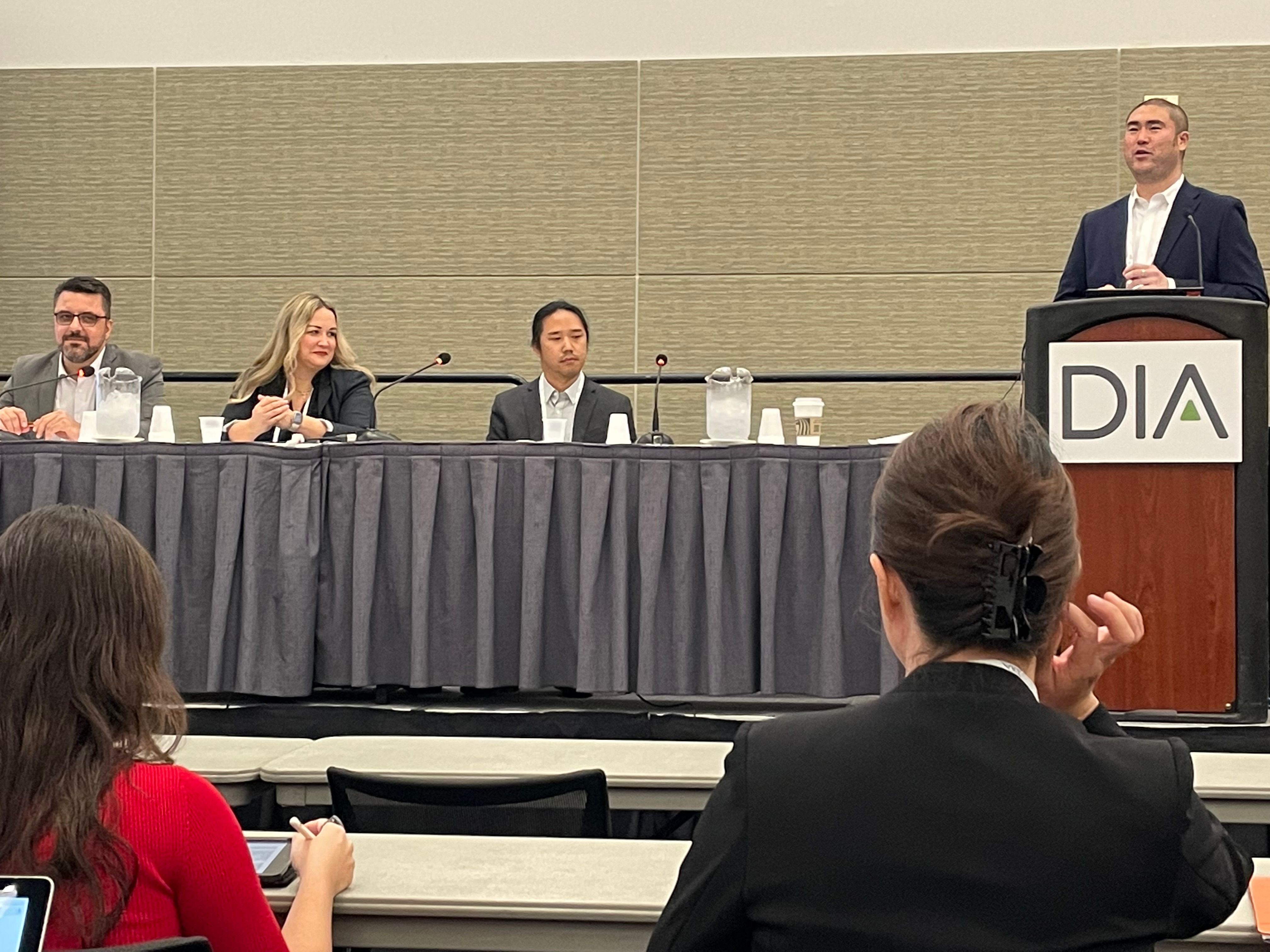DIA 2023: Medical Device Regulators and Harmonization
Session at DIA discusses the International Medical Device Regulators Forum (IMDRF), its importance and how harmonization could be improved by harmonization.
Session chair Ryan Hoshi, PhD, MBA, MSc, Director, Regulatory Policy and Intelligence, AbbVie, opened the session laying the current complexities of medical devices, with the emergence of AI or device technologies themselves, and how the sponsors and regulators interact. The session brought forth many global barriers for both parties.
Melissa Torres, MS, Associate Director for International Affairs, CDRH, opened up explaining what International Medical Device Regulators Forum (IMDRF) actually is. She explained that IMDRF is “like ICH for the device side.”
IMDRF was established in October 2011, with the goal to accelerate international medical device regulatory harmonization and convergence. It includes 11 management committee members, as well as industry observers including WHO, Argentina, Suisse Medic, and an affiliate membership South Africa. The affiliate membership is for countries that want to participate, who’s regulatory sophistication in this area may not be high but they still want to engage in IMDRF.
Lesley Maloney, PharmD, Global Regulatory Policy Lead - Digital Health and Integrated Solutions, Genentech, A Member of the Roche Group, who was most recently with their diagnostics arm, described the key differences between IMDRF and ICH. “The key difference, and or criticism, is the level of engagement IMDRF has with industry. At ICH, it’s regulator and pharma together, and ICH is more mature,” she said. She says that IMDRF is just regulators, and not a co-creation of technical guidelines. She did concede that ICH has more resources, and training on their guidances, while the IMDRF does not, so it’s up to the regulators of each country to interpret the guidance.

Augusto Geyer, MSc, Head of Medical Devices Office, ANVISA, the Brazilian Health Regulatory Agency, noted that IMDRF is important to ANVISA. He explained that IMDRF provides the basis of for their regulations in Brazil, and their recommendations are also used by ANVISA to convince other regulators in South America to adopt ANVISA recommendations. He said, “In Brazil, most of the products are imported, so we realized a program with ANVISA instruction could be used on the registrations from other regulators, so idea is to have shortage of time for products to reach the market…at almost 35% to 40% faster.”
Of the many emerging technology products that are available, the audience was polled on the most impactful topic. They were, in order, combination products; Software as a Medical Device (SaMD); digital health technology in clinical trials; companion diagnostics; AI/ML and cybersecurity.
Daniel Yoon, Acting Manager, International Affairs, Medical Devices Directorate, Health Canada, Canada said that both the SaMD and cybersecurity working groups at IMDRF are co-chaired by Canada and the United States. He noted that the general principles and considerations in cybersecurity were released in 2020, along with two more in early 2023. One of these is cybersecurity considerations for legacy medical devices. Yoon said, “The ones on the market may not be up-to-date, wo how do you address these. As well as the software components in medical device and how to address that.”
Yoon also noted that there are four IMDRF documents on SaMD, all which were released between 2013 and 2017. The goal is to update those documents within 10 years, to address the many advances, and making sure they are updated and if the prior recommendations still “hold water.”
Maloney responded to a combination products audience question that there are less harmonized definitions for combination products globally, and then further from jurisdiction to jurisdiction. “How do we tackle? Whose purview is it? IMDRF or ICH? Device or drug? These are challenges that regulators have not pursued and we do need to get to a common definition of device and drugs in combination products.”
The greatest lament overall from the panel was this lack of harmonization from this rapidly changing are of devices. Some say that regulators need to be in the same room..the EMA and IDVR; there are conversations with CTTI about basic lexicon/terminology needs to be discussed, how do ICH and IMDRF interact and how to get industry more involved on the device side.
Yoon said, “It’s a lot easier when industry can be evolved. At IMDRF, closed working groups are for only regulators. Both of the cybersecurity and SaMD were open working groups so [industry] did participate in those documents.”
As for the FDA and IMDRF relationship, Torres said that they were able to get fives FTEs to show its accountability on how in FDA we have implemented IMDRF guidances. And then FDA will provide updates on implementation.
Reference: International Medical Device Regulators Forum (IMDRF) and Technological Innovation: How International Medical Device Harmonization is Impacting Drug Strategy, DIA Boston, June 29, 2023.
FDA issues de novo clearance for SonoMotion’s Stone Clear device, for kidney stone treatment
Stone Clear is the first and only device cleared by the FDA that uses external ultrasound pulses to facilitate passage of post-lithotripsy kidney stone fragments without surgery.